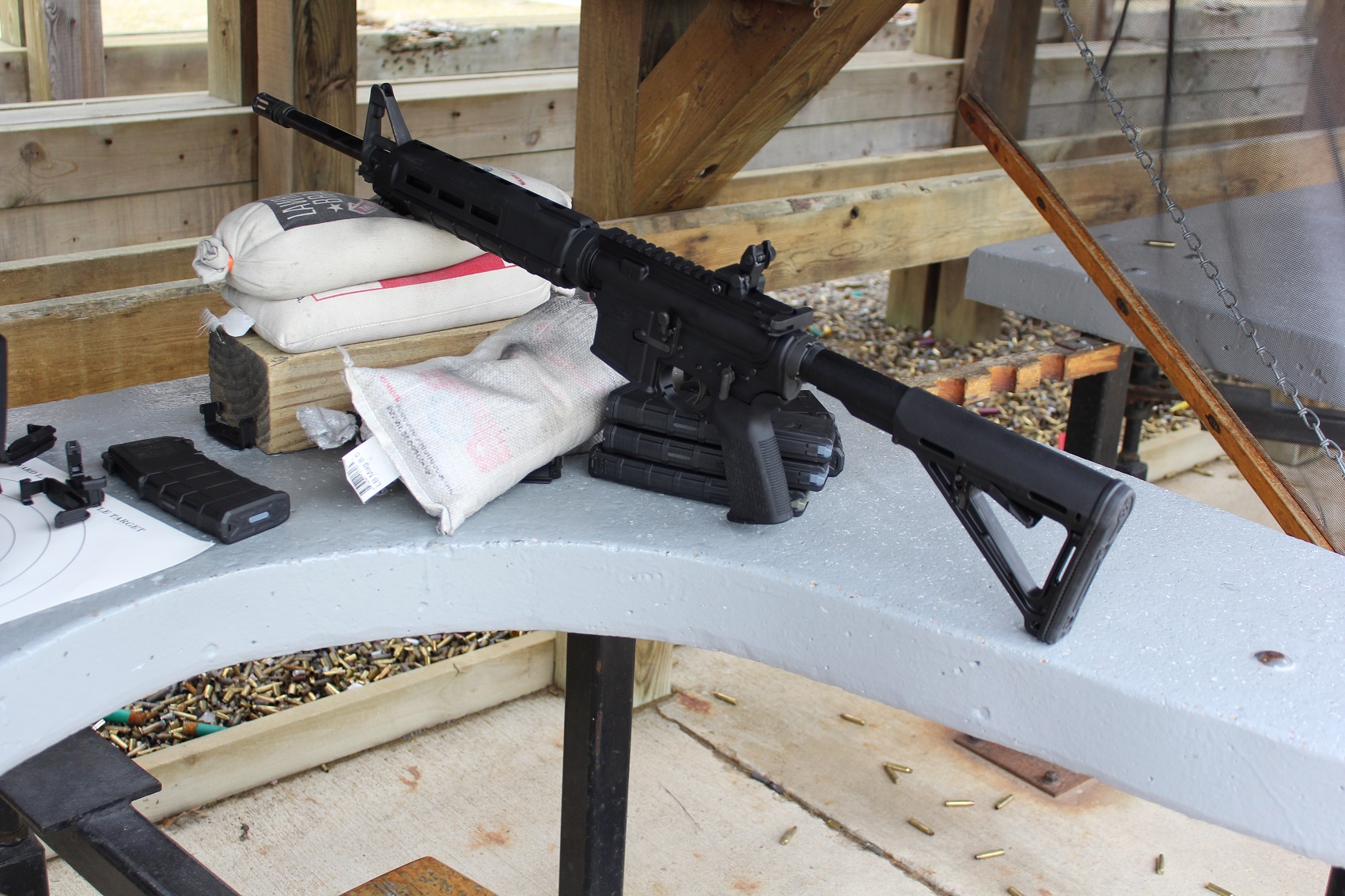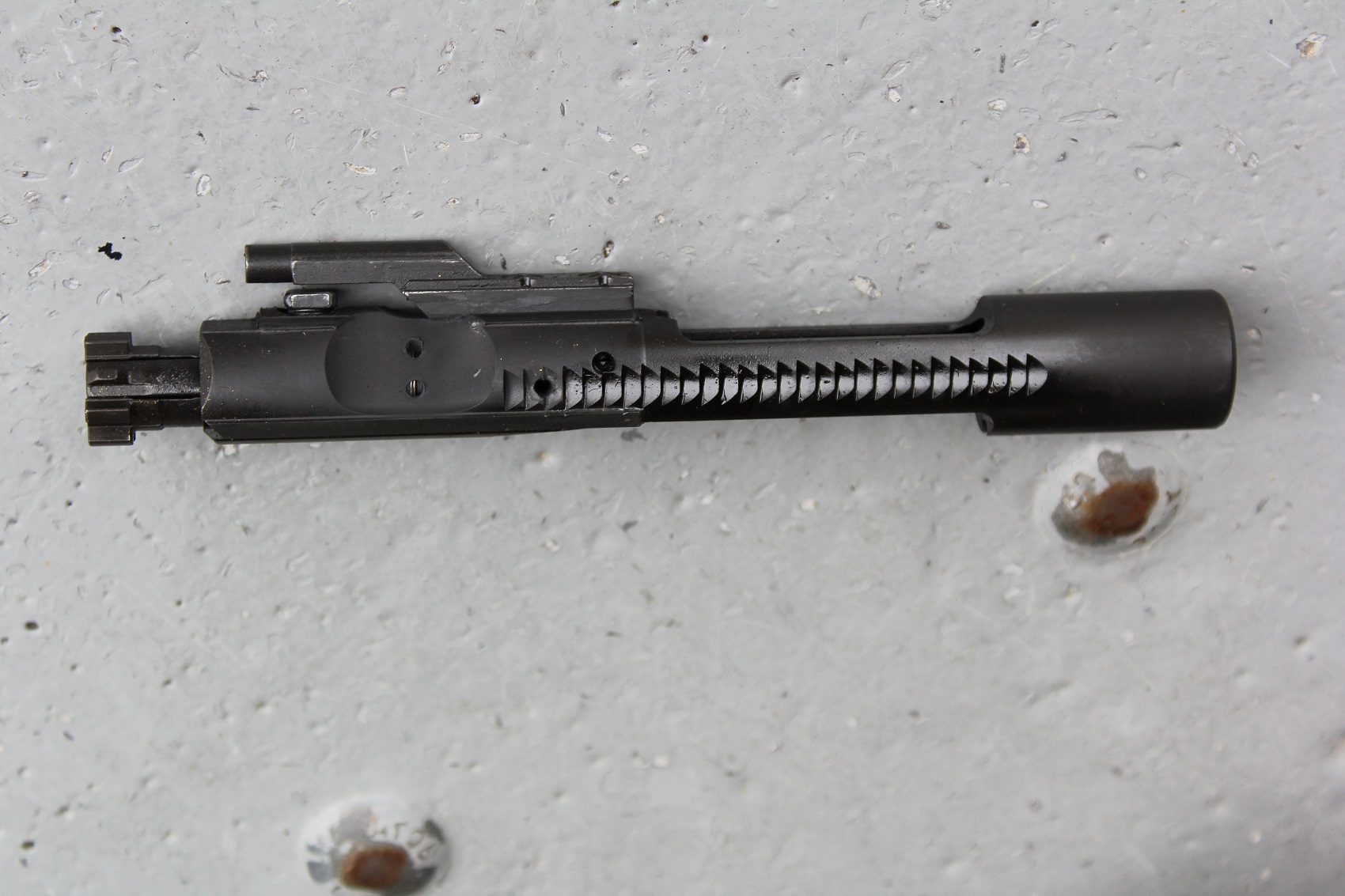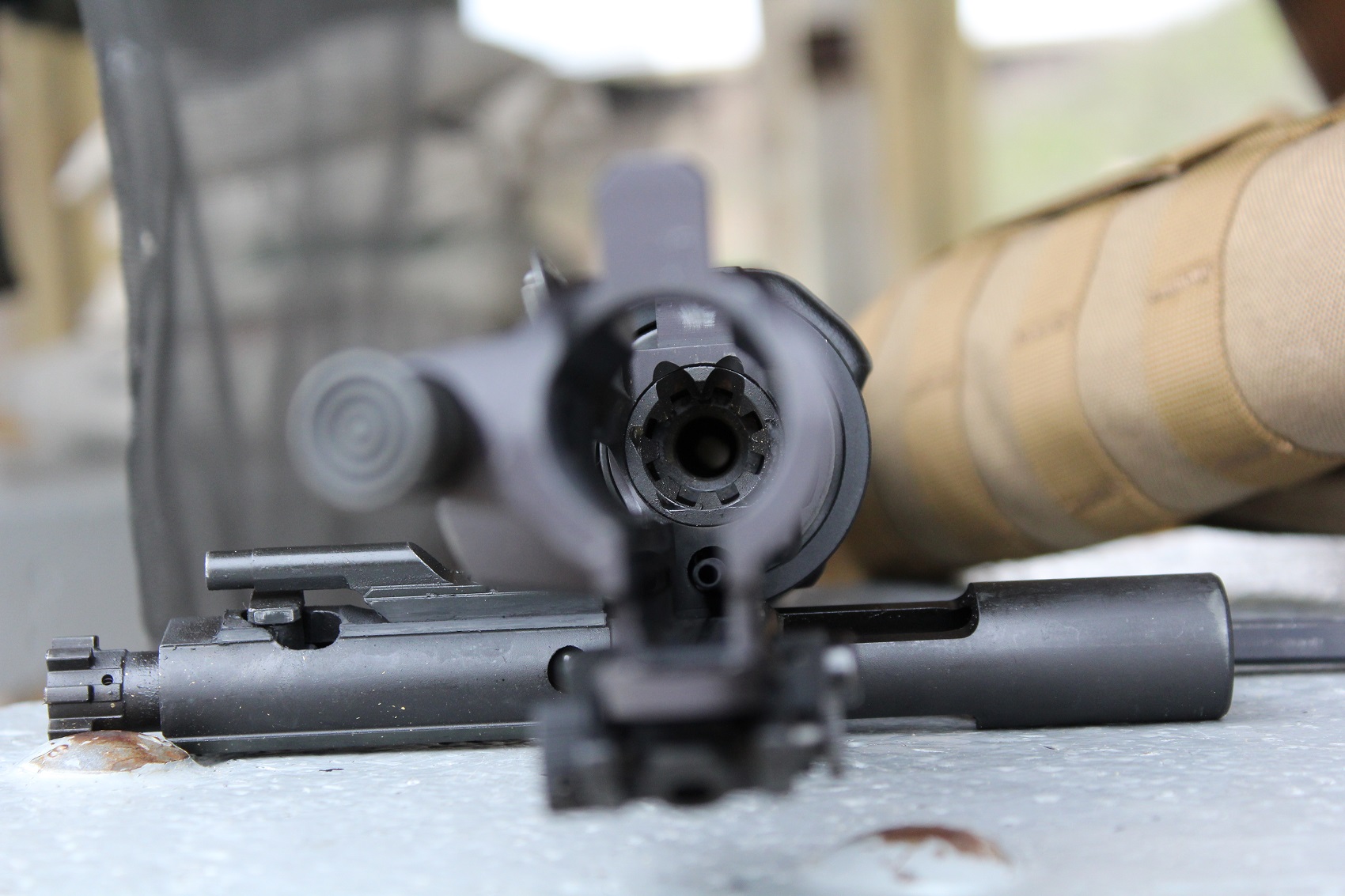PSA Freedom Rifle Torture Test, Part 1
OutdoorHub Social 02.01.17

What level of neglect and abuse can an AR-15 endure?
That’s the question we are trying to answer in this five-part series. For this test, we will be using a PSA Freedom Rifle Chambered in 5.56. The rifle came fully assembled from Palmetto State Armory. The only additional hardware on the gun is a cheap flip-up rear sight from Amazon.

Rifle Specs:
Barrel: 16″ barrel length Chambered in 5.56 NATO, with a 1:7 twist, M4 barrel extension, and a mid-length gas system. The M4 profile barrel is finished with Melonite. Barrel is finished off with an .750″ diameter F-marked front sight base with sling swivel, Magpul MOE Black Handguards and an A2 flash hider.
Upper: Forged 7075-T6 A3 AR upper is machined to MIL-SPECS and hard coat anodized. These uppers are made for us right here in the USA by a mil-spec manufacturer.
Bolt: Full-auto profile bolt carrier group. Milspec Carpenter No. 158® steel bolt, Shot Peened, High pressure tested, Mag particle inspected, Gas Key Hardened to USGI Specifications, Fastened with Grade 8 screws, and Staked Per Mil-Spec. 8620 steel M-16 profile carrier is chrome lined and phosphate coated.
Lower: These forged lowers are quality made using material is 7075-T6 and are marked “MULTI” for caliber. Finish is hardcoat annodized. Mil-spec diameter 7075-T6 buffer tube is hardcoat anodized, has 6 adjustment positions, is fitted with a MOE Carbine Stock and MOE Grip. The fire control group is a PSA polished assembly.
For this test we will be exclusively using new 55gr 5.56X45 ammo from Freedom Munitions. Additionally, we will be using Magpul PMags, Thermold magazines, and USGI aluminum magazines.
First 1,000 Rounds
The fresh rifle came out of the box with a minimal amount of lubricating oil on the moving parts. For the purposes of this test, we will not be using any additional oil or solvents to clean or lubricate the gun. This should simulate the most challenging condition for any firearm: neglect.
Right off the bat I realized we were having some mag issues. The thermold mags were causing some feed issues, which resulted in double feeds and light primer strikes. However, this only seemed to happen in colder weather, and it probably has something to do with the thermal properties of the magazine material. Once I switched to PMags and USGI mags, the rifle functioned flawlessly.
After shooting about 800 rounds I began to notice a little wiggle in the stock. Upon further inspection I realized that the castle nut on the buffer tube was loose. Luckily I had an armorers wrench in my range bag and I was able to tighten it up with no problem. Without that wrench I could have repeatedly hand-tightened it, but that’s just annoying.
After the first 1,000 rounds I disassembled the rifle and inspected the components for unusual wear. I was not surprised to find everything looking like new. Aside from some carbon buildup, there was nothing very interesting to look at. I was actually surprised by how little carbon and gunk was inside the rifle. I’ve seen much dirtier rifles after only 150 rounds. I guess Freedom Munitions uses some pretty clean burning powder in their ammo.
Here are all the components after 1,000 rounds:




Stay tuned for the next 1,000 round update. Here’s a sneak peek from the next test update:

